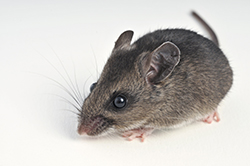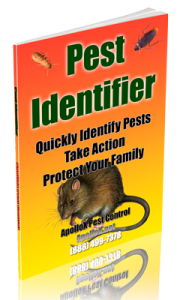Deer Mouse Pest Control
Call Now: (888) 499-7378
Schedule an Appointment Online
ApolloX Pest Control will remove deer mice from your home quickly, efficiently, and safely.
Deer Mouse Pest Control: Rodent Extermination Demonstration
 Deer Mouse Pest Control: Identifying the Deer Mouse
Deer Mouse Pest Control: Identifying the Deer Mouse
Deer mice are the prototype for “field mice” with large, bulging eyes, big ears, a bicolored pattern and a long tail. The body color varies from a yellowish or reddish brown to grayish above, with pure white undersides and feet. The bicolored body and distinctive large ears distinguish the deer mouse from the house mouse. The deer mouse is a very proficient jumper and runner, the name given due to its agility.
 Deer Mouse Pest Control: Where the Deer Mouse Lives and Breeds
Deer Mouse Pest Control: Where the Deer Mouse Lives and Breeds
Because deer mice prefer forests, grasslands, and agricultural crops, they aren’t normally found within urban and residential areas unless fields, forests, or other suitable habitats surround those areas. Deer mice are nocturnal and spend the day in refuges or nests. Nests consist of stems, twigs, leaves, and roots of grasses and other fibrous materials and may be lined with fur, feathers, or shredded cloth. Nest sites include tree hollows, stumps, and roots as well as the underside of rocks and logs. Female deer mice can be reproductively active as early as six weeks of age, bearing 3-6 young per litter.
The deer mouse enters homes through small cracks in windows and doors and are in search of food and warmth. Nests, droppings, and other signs left by deer mice are similar to those of house mice. However, deer mice have a much greater tendency to cache food supplies such as acorns, seeds, or nuts than do house mice.
 Deer Mouse Pest Control: Damage, Harm Caused by the Deer Mouse
Deer Mouse Pest Control: Damage, Harm Caused by the Deer Mouse
Deer mice damage upholstered furniture, mattresses, clothing, paper, or other materials they find suitable for constructing their nests. Deer mice are a particular concern because they spread hantavirus, which can be deadly to people. Although human cases of this virus are rare, HPS can be a severe respiratory disease in humans with fatality rates of about 36%. Deer mice shed the virus in their saliva, urine, and droppings. A person may be exposed to hantavirus by breathing contaminated dust after disturbing or cleaning rodent droppings or nests or by living or working in rodent-infested settings.
 The most effective way to avoid contracting hantavirus from deer mice is to keep them out of houses, cabins, and dwellings by rodent proofing and excluding them from these structures by sealing all small gaps and cracks. Once deer mice infest a dwelling, it is critical to avoid working and sleeping in these areas until the infestation has been controlled and the area has been made safe for humans.
The most effective way to avoid contracting hantavirus from deer mice is to keep them out of houses, cabins, and dwellings by rodent proofing and excluding them from these structures by sealing all small gaps and cracks. Once deer mice infest a dwelling, it is critical to avoid working and sleeping in these areas until the infestation has been controlled and the area has been made safe for humans.
Commercially sold ultrasonic devices and other frightening devices aren’t effective at repelling deer mice. Chemical repellents, also commercially available for outdoor use, aren’t sufficiently effective to justify their expense. Dogs and cats can catch and kill deer mice. However, it is unlikely they will effectively control deer mouse populations, and other control methods will be required.
Deer Mouse Pest Control
Call Now: (888) 499-7378
Schedule an Appointment Online
See Also:















Recent Comments